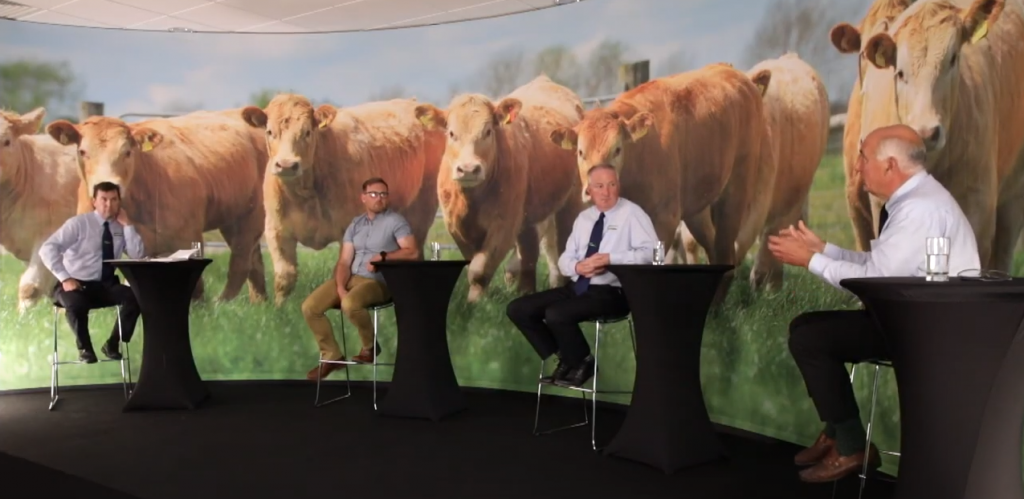The discussion at Live@Grange yesterday evening centred around how to grow and utilise more grass in beef production systems.
The panel of Teagasc’s Aidan Murray, Christy Watson and Edward O’Riordan, along with Co. Kildare suckler farmer Sean Roddy, answered questions that were sent in by the viewers.
The first question was directed to Edward. He was asked was there a difference in the quality or feed value of grass as we head into autumn and, if so, what level of supplementation would you require?
As a general rule of thumb, once we come to September we begin to see the quality of grass (or the feeding value) fall away. In that situation, I would say that the grass, at that time of the year, would be sufficient to meet the requirement of the animals, even though it might be a bit poorer than earlier in the season.
As long as grass supply is adequate, one will be slow to talk about feeding concentrates at pasture. If grass supply is limited and you have cattle about 30kg to 40kg away from being finished, you might in some stage in September begin to introduce meal to try and finish them off-pasture.
The work that we have done at Teagasc Grange would suggest that any animals which are planned to go indoors for finishing, there is little to no point to feed them at pasture. The best thing to do is to keep them at pasture for as long as you can and then go in and finish them inside, rather than trying to straddle both.
The next question was for Sean. He was asked about his use of red clover, his experience of using it and how he manages it?
Red clover, in essence, is my pride and joy. It produces high-quality dry matter digestibility (DMD) silage, with a high protein content.
From a management perspective, it’s about taking care of it. It’s my pride and joy and I treat it as such. That means I don’t go out and abuse it early in the springtime. If you need to graze it, make sure the weather is dry. If you are going out to cut it, again try and cut it when it’s dry and limit the amount of heavy machinery that is going out on it.
Again, it is about soil fertility, you need to feed it. It doesn’t need nitrogen; it will fix a lot of its own nitrogen, but it needs its phosphorus (P) and potassium (K). Therefore, as long as you treat it with a bit of respect and give it the feed that it needs, you can get upwards of five to six years out of it.
Edward was then asked how important soil fertility was in order to establish clover in a sward?
It is one of the key corner blocks that we are going to talk about (soil fertility). If we are going to introduce clover into our pastures, there may be a challenge to incorporate it. Whatever the challenge is of getting it in there, maintaining it there if the soil has a low pH value, will make the persistence of clover, in a sward, a real challenge.
If we are going to do anything with our pastures the soil pH has to be correct and the P and the K values are also important to get right.

